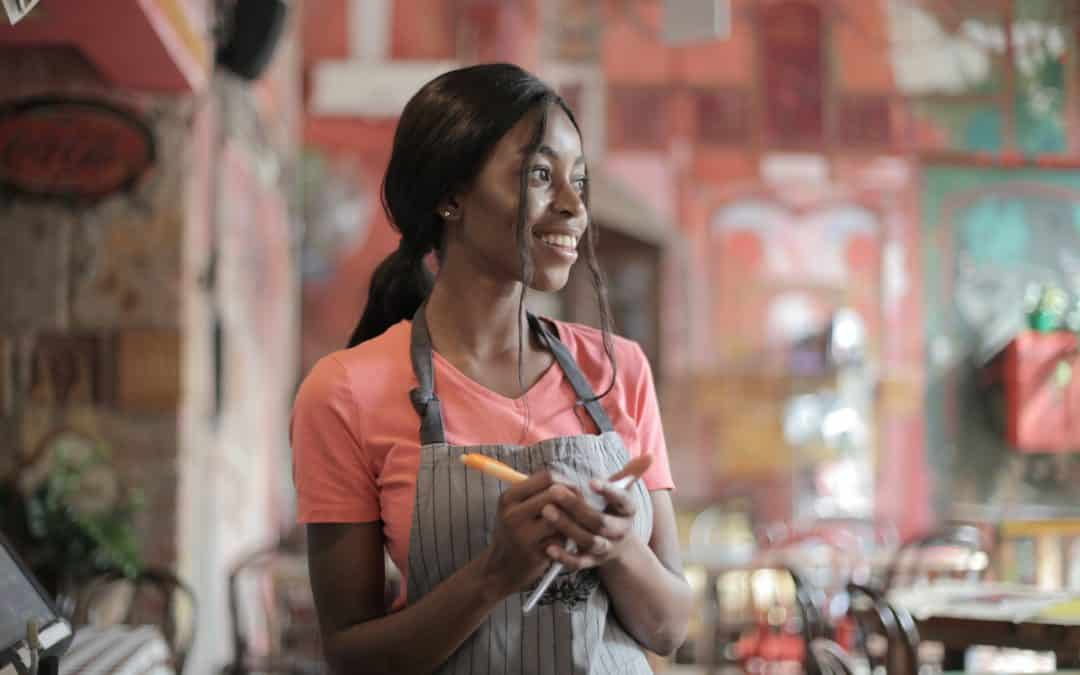There are a number of skills which are integral to being a good waiter, observation being one of the most important. People with poor observational skills can create major problems in a busy work space like a restaurant as they will generally have a poor spatial awareness, they might also miss things that are dangerous or situations where they could earn your company more money. Here are five things your waiting staff should look out for when they’re working!
1: Empty – Or Nearly Empty Glasses!
This might seem like a very obvious thing to look for at first, but a lot of waiting staff don’t keep an eye out for them. Customers will usually drink a couple of drinks in the night, but some will nurse the glass like crazy.
An attentive waiter can offer to refill glasses which are getting low, which will usually prompt the customer subconsciously to finish their drink as they know they will be getting more. In a night where you are getting a lot of customers, your staff will have to work hard to keep an eye on this, but if they work hard at it, they will sell more drinks than they would otherwise, earning your business more money.
Customers won’t always want to order too many drinks, but when someone comes up and asks you: “Would you like another J2O?” – Most people will say: “Oh go on then, just one more!”
2: Possible Hazards!
The restaurant can be quite a dangerous place at times if not looked after and maintained properly. Sometimes though, even in a well maintained restaurant, hazards can easily appear on shift! Is there a spillage someone can slip on? Is there something in the way that someone can trip on? Your waiters should keep an eye out for these kinds of things.
It’s always important to make sure that people are able to move around safely in the restaurant. If someone slips or trips on a safety hazard in the restaurant, then there is always the chance that this person might choose to take some form of legal action. Observant staff can keep an eye out for things that can be slipped and tripped over, making your restaurant a safer place to be.
You’re also unlikely to get a positive review if people get injured at your restaurant. The best way to prevent this is to have an aware body of staff looking for potential problems before they become an incident.
3: Look for Static Tables!
Is there a lull in dialog? Are people not eating? Not looking at each other or communicating? Is something a little amiss? This could be a time for your waiter to go to the table and ask if the customers are enjoying their meal.
Customers in general need to feel appreciated or cared about, and sometimes there are external factors that might be a problem. There could be an argument, uncertainty in a date or other issues.
This break in conversation can help people feel a little more comfortable and cared about. Is there a problem with the food? It’s possible. Getting this sorted out for a customer could make everything better, and possibly mean a favourable review online.
4: Keep and Eye out for People who are trying to take a group photo!
If you’ve ever been out with your family you might have noticed that sometimes, someone wants to take a group photo. Something to remember the occasion. If your waiting staff are on the lookout, they can come and offer to take the photo of everyone.
This is nice for people as they don’t have to ask staff. Sometimes people are happy to flag down a waiter and say: “Hey, can you take a group photo for us?” But not everyone is like that. In the modern world of Social Media, people are a lot shyer and more reserved. Sometimes it can be hard for them to ask for something like this. This way, the waiter makes everyone feel cared about, and gives them something to share with the world. This photo will very likely be up on Social Media, so it’s great advertising!
5: Unhappy Customers
Sometimes people don’t like to immediately complain, sometimes they experience problems throughout their stay and get more agitated before lashing out. It’s important to be able to spot signs that a person is unhappy and try and engage them sooner rather than later. Asking if everything is fine with the meal is a good way to open up this conversation.
It’s always good for your waiters to be polite in a potentially volatile situation. This may seem obvious to a lot of people, but not all waiters practise it. Sometimes it can be hard to be friendly and polite with people, especially if they are upset and lashing out.
This may not always be the fault of the restaurant. It might be something to do with the customer’s personal life and have nothing to do with the situation. Always apologise if there has been a problem in service, even if the customer is wrong.
The customer feels upset, and they need to be guided positively, rather than feel like they’re in a fight. If they feel looked after they are more likely to return and they are less likely to make a scene, which could scare off other customers. Good eye contact shows that the waiter is paying attention and cares about what the customer is saying. If you’d like to learn a bit more about dealing with unhappy customers, check out our blog on the subject, here!

I’m a social media marketing specialist based in Wivenhoe, the CEO of Fantasoft and wannabe space adventurer.

